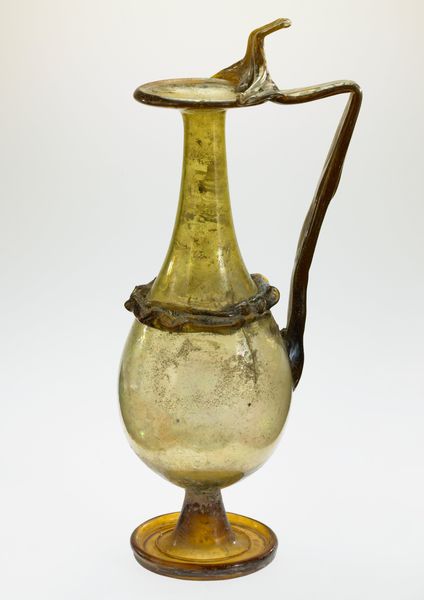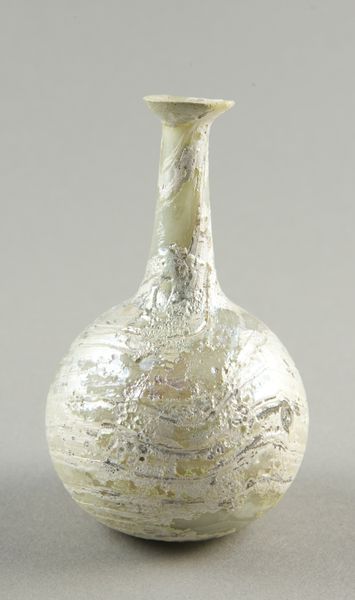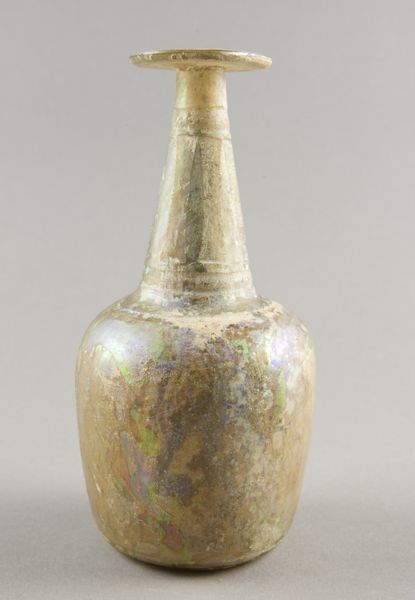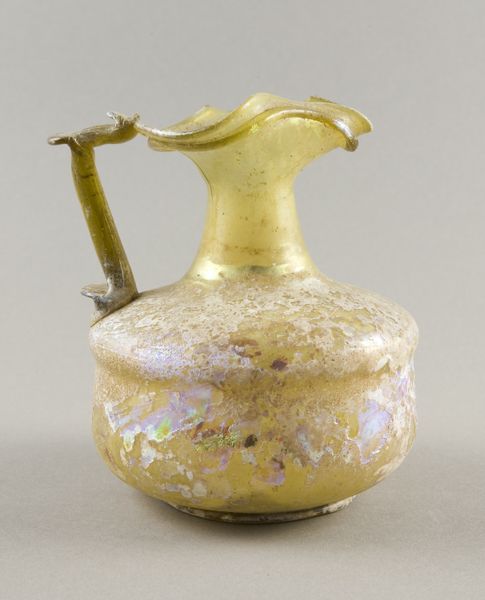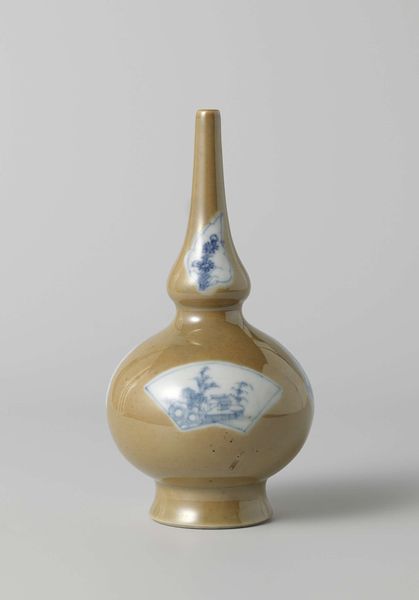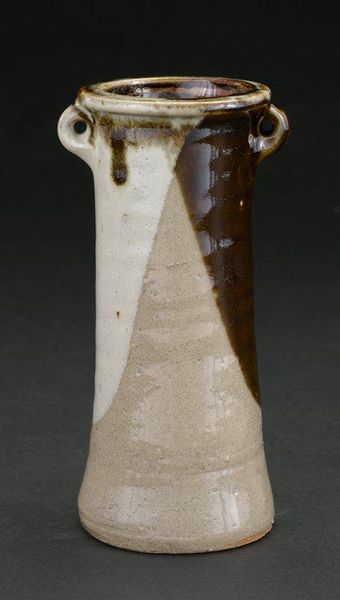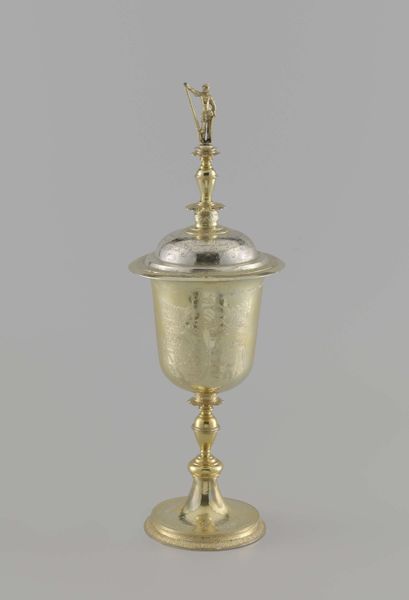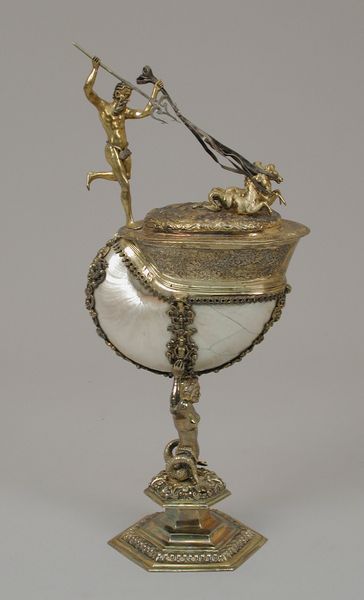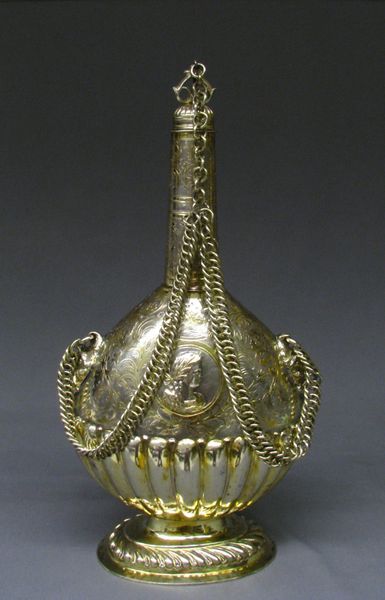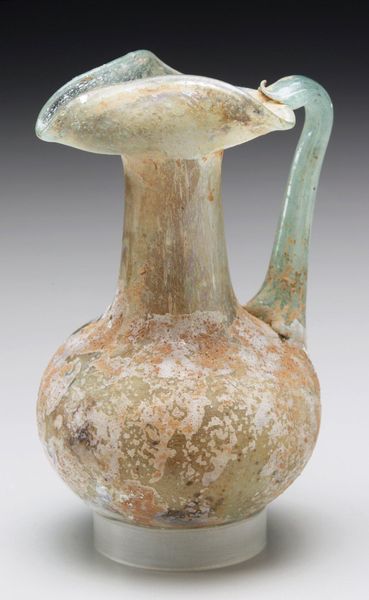
ceramic, glass
#
medieval
#
ceramic
#
glass
#
ceramic
#
islamic-art
Dimensions: 17.7 × 8.6 × 8.6 cm (6 15/16 × 3 3/8 × 3 3/8 in.)
Copyright: Public Domain
Editor: Here we have an exquisite glass Flask, probably from the 9th to 11th century. I'm really drawn to how the iridescent surface seems to shimmer. What do you find most interesting about this object? Curator: Well, immediately I'm interested in how this object collapses boundaries. Its clear utility contrasts the almost baroque additions of decoration around the main body. The material tells a story too; the availability of such refined glass signals complex trade routes and specialist craftsmanship of the time. Editor: The handles – are those functional or purely decorative? They seem almost awkwardly placed. Curator: Precisely! Do they aid in handling, or do they indicate something more? Perhaps status, or a connection to a particular workshop that valued ornate designs? Remember, every choice – material, form, decoration – represents labor, skill, and the intended consumption of this piece. It's function transcends mere containment; it becomes a display of production and the aspirations of its owner. Editor: So, you’re saying we can read this flask as an artifact not just of beauty, but also of social and economic practices? Curator: Exactly. How and where the glass was sourced, the techniques employed in its manufacture, and ultimately who would have used such a thing speaks volumes about the social landscape of its time. It allows us to consider labor, trade and the very concept of value in the medieval world. Editor: I’ve never thought about art this way before, thank you! Curator: Indeed. Considering these details gives us a glimpse into the past, viewed through its means of production and material existence.
Comments
No comments
Be the first to comment and join the conversation on the ultimate creative platform.



